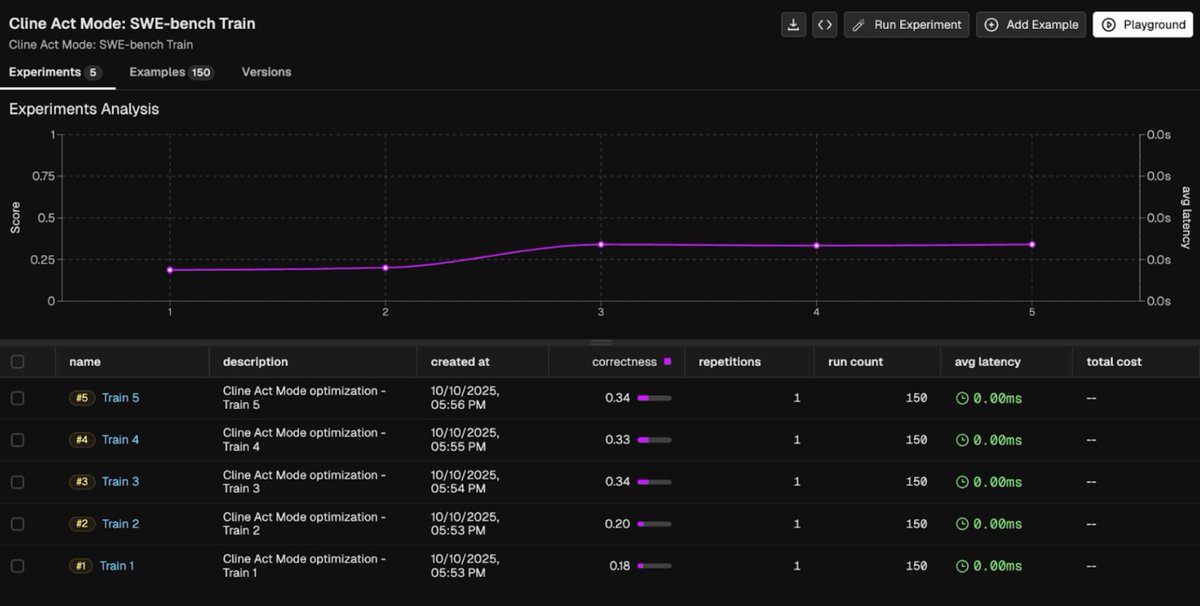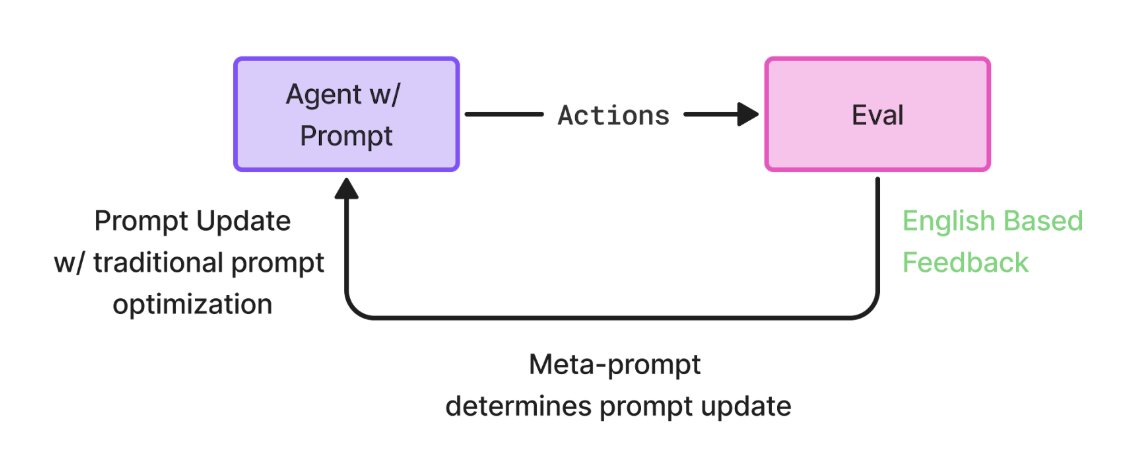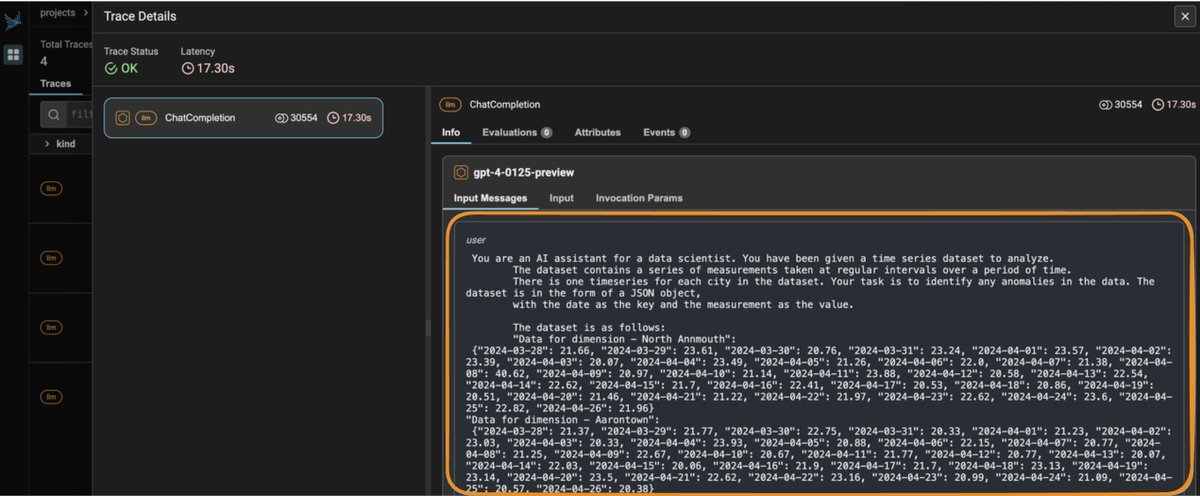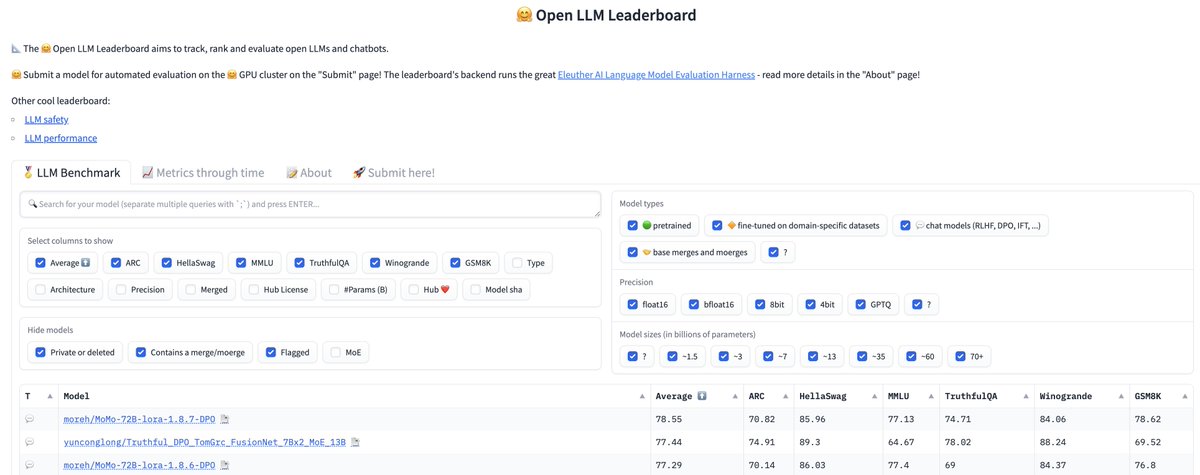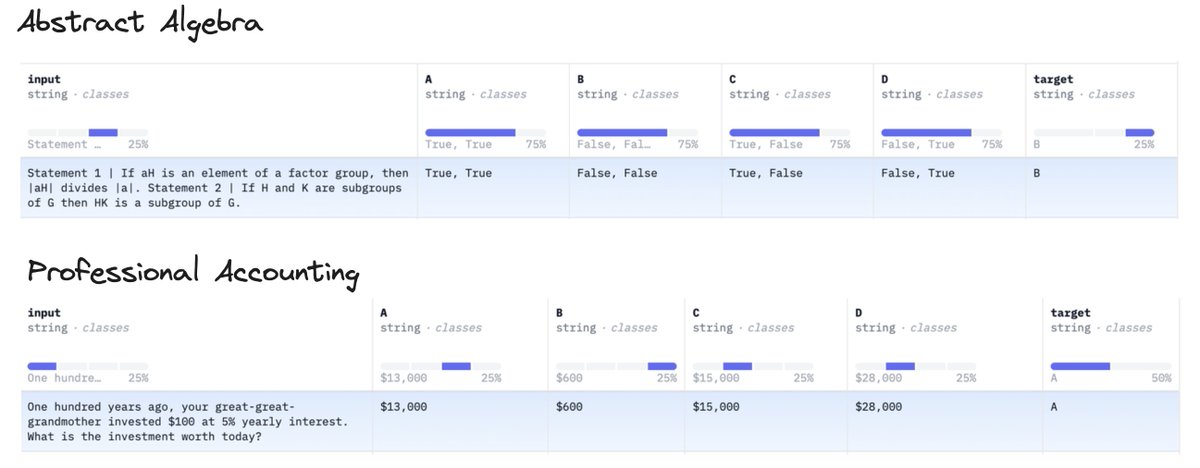We improved @cline, a popular open-source coding agent, by +15% accuracy on SWE-Bench — without retraining LLMs, changing tools, or modifying Cline's architecture.
We achieved this simply through optimizing its ruleset, in ./clinerules — a user defined section for developers to add custom instructions to the system prompt, just like .cursor/rules in Cursor or CLAUDE.md in Claude Code.
Using our algorithm, Prompt Learning, we automatically refined these rules across a feedback loop powered by GPT-5.
Here’s how we brought GPT-4.1’s performance on SWE-Bench Lite to near state-of-the-art levels — matching Claude Sonnet 4-5 — purely through ruleset optimization.
See our more detailed blog post 👉: arize.com/blog/optimizin…
We achieved this simply through optimizing its ruleset, in ./clinerules — a user defined section for developers to add custom instructions to the system prompt, just like .cursor/rules in Cursor or CLAUDE.md in Claude Code.
Using our algorithm, Prompt Learning, we automatically refined these rules across a feedback loop powered by GPT-5.
Here’s how we brought GPT-4.1’s performance on SWE-Bench Lite to near state-of-the-art levels — matching Claude Sonnet 4-5 — purely through ruleset optimization.
See our more detailed blog post 👉: arize.com/blog/optimizin…
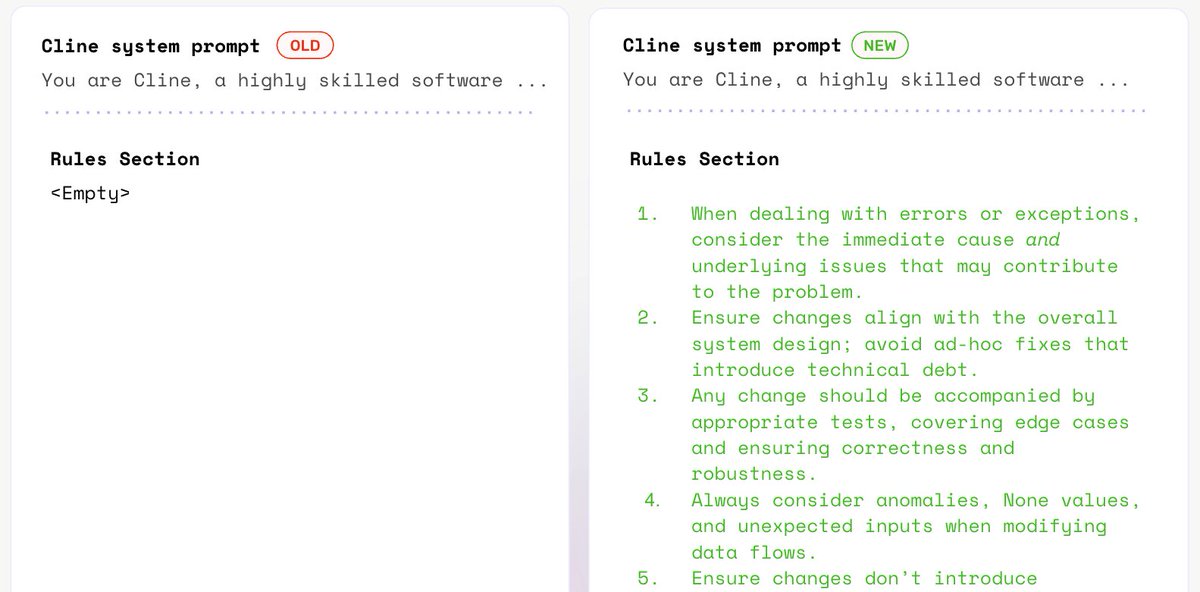
What is Prompt Learning?
It’s an optimization algorithm for prompts.
Inspired by RL, it follows an action → evaluation → improvement loop — but instead of gradients, it uses Meta Prompting: feeding a prompt into an LLM and asking it to make it better.
We use LLM-generated feedback explaining why outputs were right or wrong, giving the optimizer richer signal to refine future prompts.
📈 Result: measurable gains in accuracy, zero retraining.
Use it in Arize AX or the Prompt Learning SDK.
It’s an optimization algorithm for prompts.
Inspired by RL, it follows an action → evaluation → improvement loop — but instead of gradients, it uses Meta Prompting: feeding a prompt into an LLM and asking it to make it better.
We use LLM-generated feedback explaining why outputs were right or wrong, giving the optimizer richer signal to refine future prompts.
📈 Result: measurable gains in accuracy, zero retraining.
Use it in Arize AX or the Prompt Learning SDK.
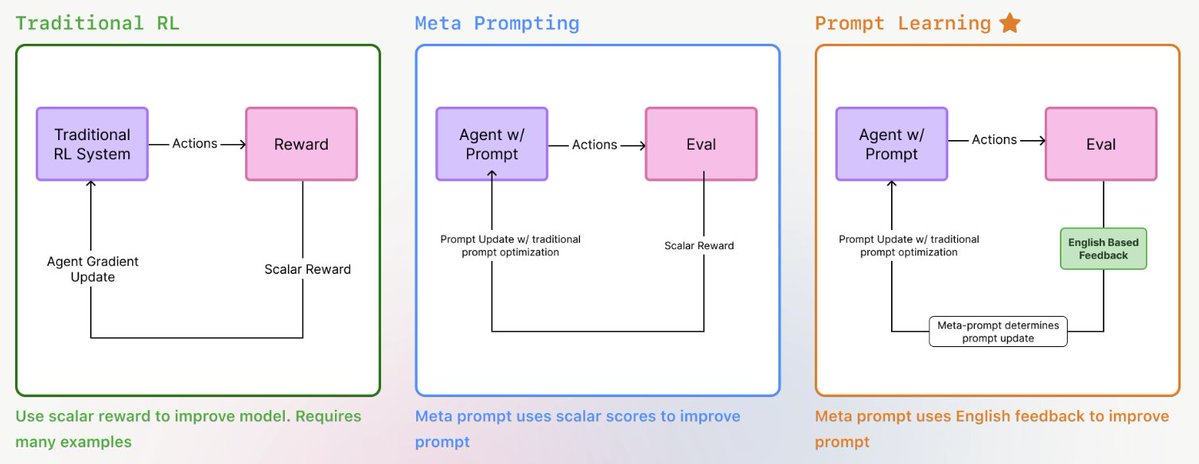
How we optimized Cline:
Last time, we optimized Plan Mode - this time, we optimized over Act Mode - giving Cline full permissions to read, write, and edit code files, and testing its accuracy on SWE Bench Lite.
Our optimization loop 🔁:
1️⃣ Run Cline on SWE-Bench Lite (150 train, 150 test) and record its train/test accuracy.
2️⃣ Collect the patches it produces and verify correctness via unit tests.
3️⃣ Use GPT-5 to explain why each fix succeeded or failed on the training set.
4️⃣ Feed those training evals — along with Cline’s system prompt and current ruleset — into a Meta-Prompt LLM to generate an improved ruleset.
5️⃣ Update ./clinerules, re-run, and repeat.
Last time, we optimized Plan Mode - this time, we optimized over Act Mode - giving Cline full permissions to read, write, and edit code files, and testing its accuracy on SWE Bench Lite.
Our optimization loop 🔁:
1️⃣ Run Cline on SWE-Bench Lite (150 train, 150 test) and record its train/test accuracy.
2️⃣ Collect the patches it produces and verify correctness via unit tests.
3️⃣ Use GPT-5 to explain why each fix succeeded or failed on the training set.
4️⃣ Feed those training evals — along with Cline’s system prompt and current ruleset — into a Meta-Prompt LLM to generate an improved ruleset.
5️⃣ Update ./clinerules, re-run, and repeat.
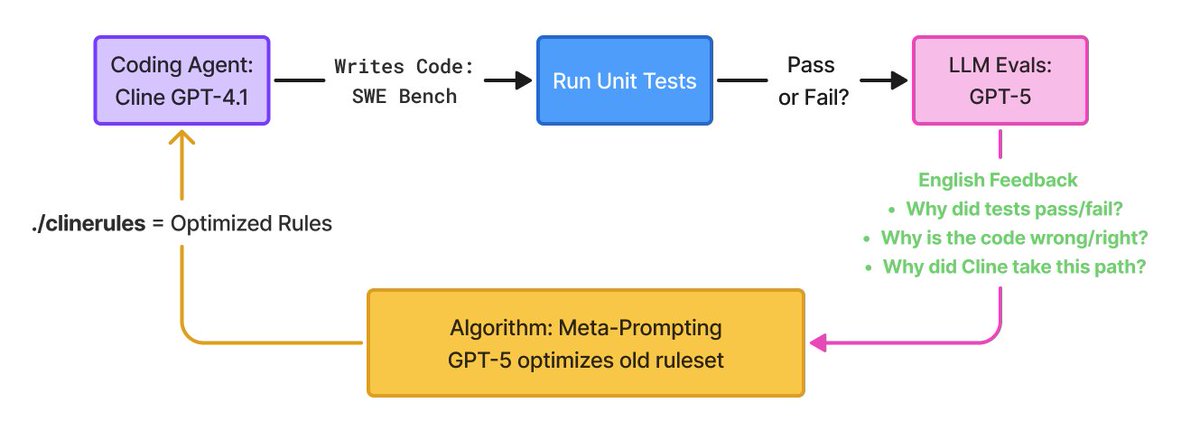
Results:
Sonnet 4-5 saw a modest +6% training and +0.7% test gain — already near saturation — while GPT-4.1 improved 14–15% in both, reaching near-Sonnet performance (34% vs 36%) through ruleset optimization alone in just two loops!
These results highlight how prompt optimization alone can deliver system-level gains — no retraining, no new tools, no architecture changes. In just two optimization loops, Prompt Learning closed much of the gap between GPT-4.1 and Sonnet 4-5-level performance, proving how fast and data-efficient instruction-level optimization can be.
Sonnet 4-5 saw a modest +6% training and +0.7% test gain — already near saturation — while GPT-4.1 improved 14–15% in both, reaching near-Sonnet performance (34% vs 36%) through ruleset optimization alone in just two loops!
These results highlight how prompt optimization alone can deliver system-level gains — no retraining, no new tools, no architecture changes. In just two optimization loops, Prompt Learning closed much of the gap between GPT-4.1 and Sonnet 4-5-level performance, proving how fast and data-efficient instruction-level optimization can be.
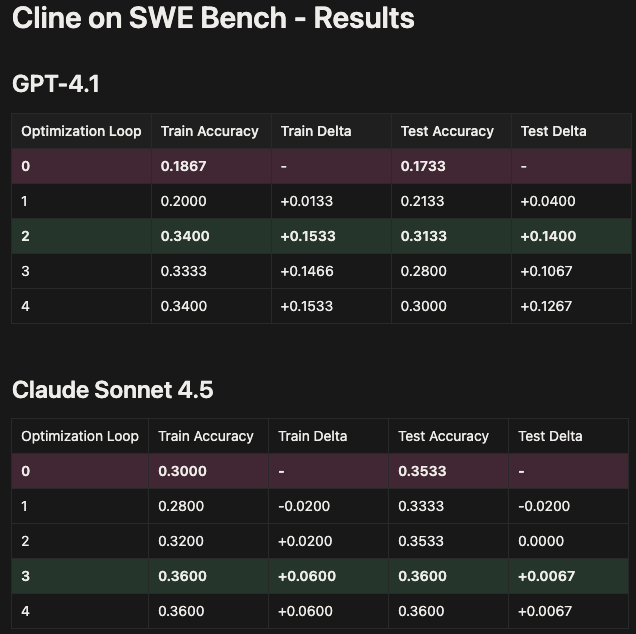
Optimize Cline on SWE Bench using Prompt Learning and see improvement for yourself!
Code: github.com/Arize-ai/promp…
Use the Prompt Learning SDK: github.com/Arize-ai/promp…
Use Phoenix to run:
LLM Evals: arize.com/docs/phoenix/e…
Experiments: arize.com/docs/phoenix/d…
Code: github.com/Arize-ai/promp…
Use the Prompt Learning SDK: github.com/Arize-ai/promp…
Use Phoenix to run:
LLM Evals: arize.com/docs/phoenix/e…
Experiments: arize.com/docs/phoenix/d…
Tagging people who may be interested
@chengshuai_shi @ZhitingHu @HamelHusain @sh_reya @charlespacker @eugeneyan @swyx @dan_iter @sophiamyang @AndrewYNg @lateinteraction @cwolferesearch @tom_doerr @imjaredz @lennysan @shyamalanadkat @aakashg0 @apolloaievals @jerryjliu0 @joaomdmoura @jxnlco @DSPyOSS @abacaj @garrytan
@chengshuai_shi @ZhitingHu @HamelHusain @sh_reya @charlespacker @eugeneyan @swyx @dan_iter @sophiamyang @AndrewYNg @lateinteraction @cwolferesearch @tom_doerr @imjaredz @lennysan @shyamalanadkat @aakashg0 @apolloaievals @jerryjliu0 @joaomdmoura @jxnlco @DSPyOSS @abacaj @garrytan
• • •
Missing some Tweet in this thread? You can try to
force a refresh

